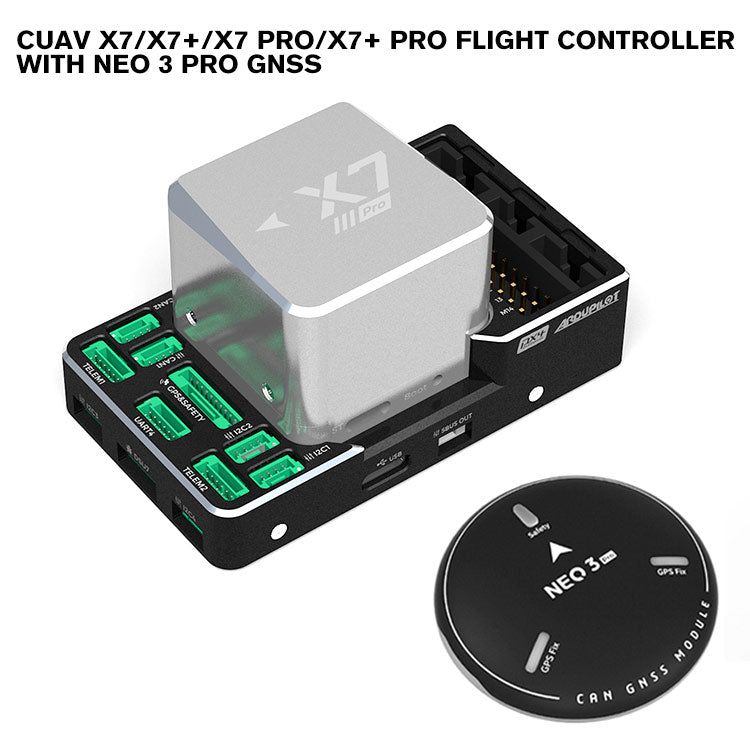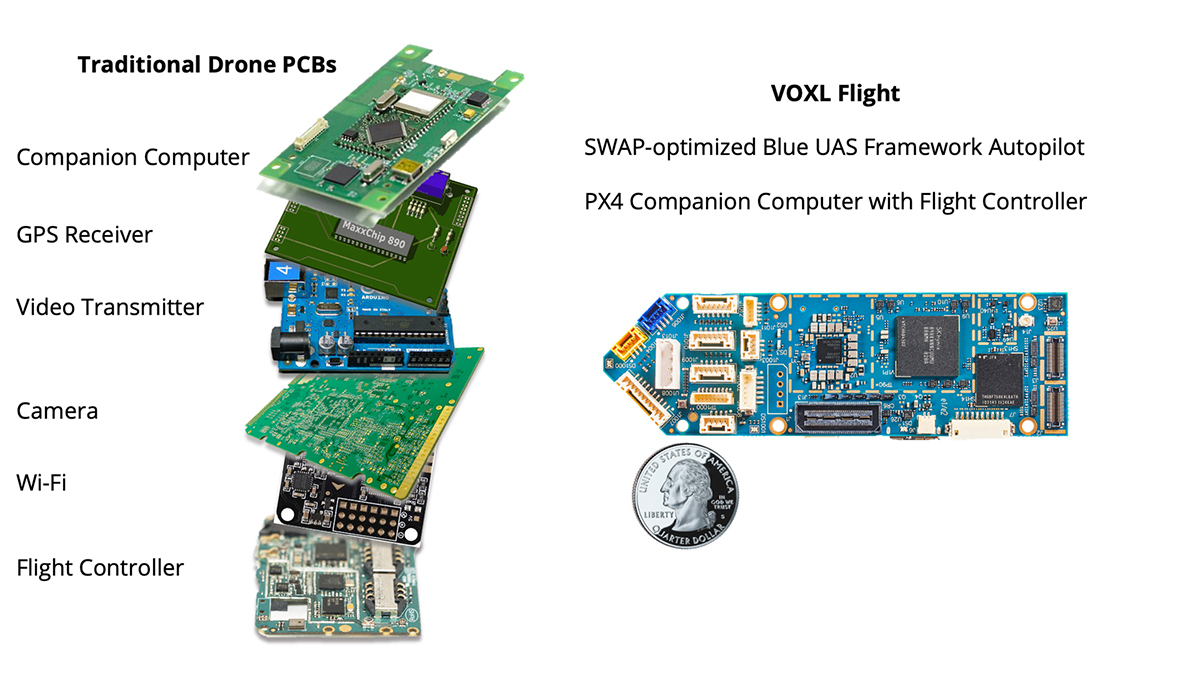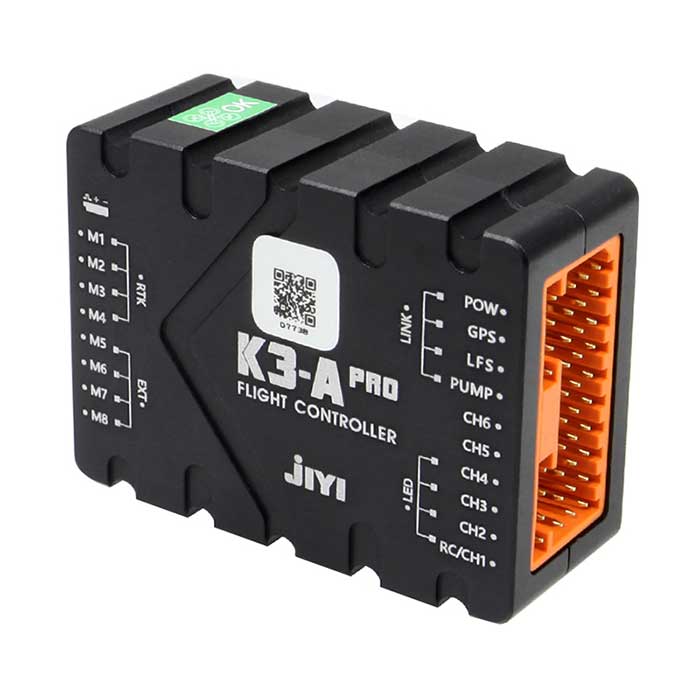SparkNavi Drone Flight Controller and GNSS/INS Made in Taiwan: Advancement for Professional UAVs
SparkNavi Drone Flight Controller and GNSS/INS Made in Taiwan: Advancement for Professional UAVs
Blog Article
Discovering the Duty of Drone Flight Controllers in Enhancing Flight Stability and Navigating Efficiency
The improvement of drone innovation has actually dramatically boosted the value of trip controllers, which offer as the brain of these aerial lorries. By integrating real-time information from a range of sensors, trip controllers boost flight security and navigation efficiency, guaranteeing that drones can run efficiently also in complicated settings.

Comprehending Flight Controllers
Trip controllers are indispensable components in the functioning of drones, working as the brains that maintain and manage flight procedures. These sophisticated gadgets procedure information from different sensing units, consisting of accelerometers, gyroscopes, and GPS, to guarantee that the drone preserves its intended trip course. The flight controller translates this information and executes commands based upon pre-defined algorithms, making it possible for the drone to reply to ecological changes, such as wind or obstacles.
The main feature of a trip controller is to keep security during flight. It accomplishes this by making real-time modifications to the drone's motors and control surfaces, guaranteeing balance and control. In addition, contemporary trip controllers incorporate sophisticated functions such as waypoint navigation, permitting for automated flight paths and boosted functional effectiveness.
Understanding the design of trip controllers is essential for both specialists and hobbyists. They usually contain a microcontroller, firmware, and numerous user interfaces for sensing unit input and interaction. As innovation developments, trip controllers have ended up being a lot more capable and compact, incorporating expert system to adapt and improve decision-making procedures to intricate flight situations. This advancement signifies an essential advancement in the drone sector, leading the way for extra advanced applications and much safer procedures.
Trick Parts of Trip Security
Achieving optimal trip stability in drones depends on numerous vital elements that function in performance to make certain controlled and smooth operations. Central to this stability is the trip controller itself, which processes data from various sensors to preserve the wanted flight perspective. This includes accelerometers and gyroscopes that determine activity and alignment, enabling for real-time modifications to the drone's placement.
One more crucial component is the digital speed controllers (ESCs), which manage the power delivered to the motors. By finely adjusting motor rates in response to flight controller commands, ESCs assist keep equilibrium and counteract disruptions triggered by wind or unexpected movements.
Additionally, the design of the drone's framework plays a pivotal role in flight stability. A well-structured framework minimizes vibrations and improves the overall wind resistant profile, adding to smoother flight features. Ultimately, the assimilation of advanced formulas within the flight controller aids in anticipating modifications, making certain a adaptable and receptive trip experience.
With each other, these parts create a cohesive system that boosts a drone's security, permitting for precise maneuvering and improved performance in numerous flight problems.
Navigating Efficiency Strategies
Effectiveness in navigation is necessary for optimizing drone procedures, especially in intricate atmospheres. Effective navigation strategies boost the ability of drones to pass through challenging terrains and stay clear of challenges, thus improving operational performance and safety and security.
One prominent method is the implementation of advanced general practitioners and inertial measurement devices (IMUs) that provide accurate area tracking and positioning information. These modern technologies enable drones to determine Bonuses optimal flight courses in real-time, considering numerous variables such as wind problems and potential obstacles.
One more strategy involves using algorithms for path planning and optimization. Algorithms such as A * and Dijkstra's formula can be deployed to establish one of the most efficient route while decreasing energy intake and trip time. Moreover, integrating artificial intelligence versions can enable drones to adaptively gain More about the author from their environments, enhancing navigation capacities with experience.

Effect On Autonomous Drones
The integration of innovative navigating techniques has actually greatly changed the capacities of self-governing drones, allowing them to operate with higher freedom and precision. SparkNavi drone flight controller and GNSS/INS made in taiwan. These enhancements are mostly attributed to innovative flight controllers that make use of real-time information handling and sensing unit blend, enabling drones to navigate complicated settings seamlessly
The influence on autonomous drones extends past plain navigating; it includes enhanced barrier evasion, enhanced security during vibrant conditions, and boosted objective dependability. By leveraging algorithms that incorporate artificial intelligence and expert system, drones can adjust to altering circumstances, making educated choices that enhance their flight paths while minimizing threats.
Additionally, the implementation of robust flight controllers has facilitated the implementation of complicated tasks, such as aerial inspections, distribution services, and farming tracking, with very little human intervention. This capability not only streamlines operations however additionally minimizes human mistake, consequently enhancing total safety and security.
As a result, the functional range of autonomous drones has increased significantly, making them essential tools in various sectors. Their ability to execute efficiently in varied scenarios highlights the vital role that progressed flight controllers play in forming the future of unmanned airborne systems.
Future Trends in Flight Control
Frequently, developments in flight control technology are positioned to redefine the landscape of drone procedures in the visit site coming years. Arising patterns suggest a substantial shift towards improved artificial intelligence (AI) integration, enabling flight controllers to refine real-time information much more successfully. This evolution will certainly facilitate improved decision-making capacities, enabling drones to adapt to dynamic ecological problems autonomously.
Furthermore, the implementation of maker learning algorithms is anticipated to improve anticipating upkeep, thus minimizing downtime and extending the lifecycle of drone parts. This positive method to maintenance will certainly be crucial as drone applications expand throughout various industries, from farming to logistics.

.jpg)
Lastly, advancements in safe and secure interaction procedures will deal with safety and security and governing issues, ensuring that drones can run seamlessly in busy airspaces (SparkNavi drone flight controller and GNSS/INS made in taiwan). Collectively, these patterns aim towards a future where trip control systems are not just smarter and a lot more reliable but likewise qualified of operating securely in a significantly incorporated airspace
Conclusion
Finally, drone trip controllers are essential to boosting flight security and navigating effectiveness via the innovative handling of sensing unit information. By keeping optimum flight mindsets and utilizing innovative algorithms for path optimization and obstacle avoidance, these controllers dramatically add to the freedom and operational security of drones. As technology remains to develop, even more innovations in flight control systems are expected, promising improved performance and broadened capacities in the realm of unmanned aerial lorries.
By integrating real-time information from a selection of sensors, trip controllers enhance trip security and navigation performance, making sure that drones can run smoothly also in intricate atmospheres.Trip controllers are indispensable parts in the functioning of drones, serving as the brains that manage and support trip procedures. In addition, modern-day trip controllers incorporate advanced features such as waypoint navigation, allowing for automated flight paths and improved functional efficiency.
Central to this stability is the trip controller itself, which refines data from different sensors to maintain the desired flight attitude.In final thought, drone trip controllers are integral to enhancing trip security and navigation performance via the advanced processing of sensing unit data.
Report this page